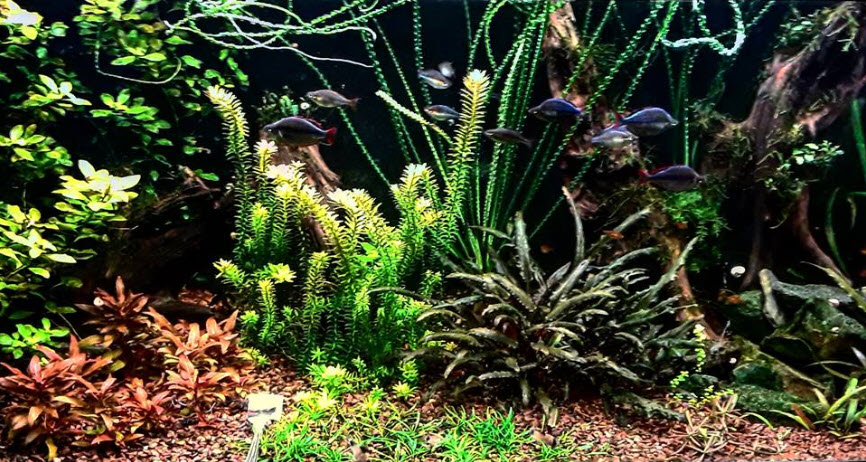
Typically people do maintenance on their aquariums at some set time interval. Some do it every week. And some do it every two months. There typically are several items which make up maintenance.
- Water changes make up the bulk of time spent in aquarium maintenance.
- Many clean the gravel every water change, something I do not recommend
- Many clean or even replace their filter media every water change, which is a BIG mistake
- Many clean or replace the mechanical media in their filter every water change
- Some check the chlorine level in the tap water before every water change
- Some consider feeding part of maintenance.
- Almost everyone cleans off the front viewing area of algae once a week or even more
We cover the first four items in depth in separate articles in this chapter. We cover the last three items, chlorine, feeding and viewing area cleaning, in paragraphs below.

Aquarium Maintenance and Stocking Ratio
Aquarium Maintenance can be a very simple topic or a very complex topic, depending on the aquarium stocking ratio. In nature there is a very light stocking of fish in most freshwater systems. As a result, with light stocking, Mother Nature pretty much takes care of everything just fine. With most aquariums with light stocking (4 grams of fish per gallon) of fish like angelfish and platies, one can simply do:
- a 50% water change every two months
- do no substrate vacuuming
- clean only the mechanical media in the filter once a week
- clean the algae off the front glass once a week
Probably 80% of all aquariums in the hobby are just fine with this regimen. But if one looks up stocking ratio apps and websites and does the inputs into those sites AND those sites say you are over 100% stocked or over, i.e. overstocked, AND you do not have a huge amount of biofiltration, one CAN have a problem.
If one uses a gravel substrate one CAN POSSIBLY develop low grade bad organic compound emissions which create health problems with the fish. These problems include mycobacteriosis (“Fish TB”), bacterial infections, and hole-in-the-head. It is rare but here CAN be a general “failure to thrive” and odd behavior in fish. We go into this in some depth in this link
18.5. Heavy Stocked Maintenance
But it must be emphasized this is rare. It is not something for the average hobbyist to be concerned about.
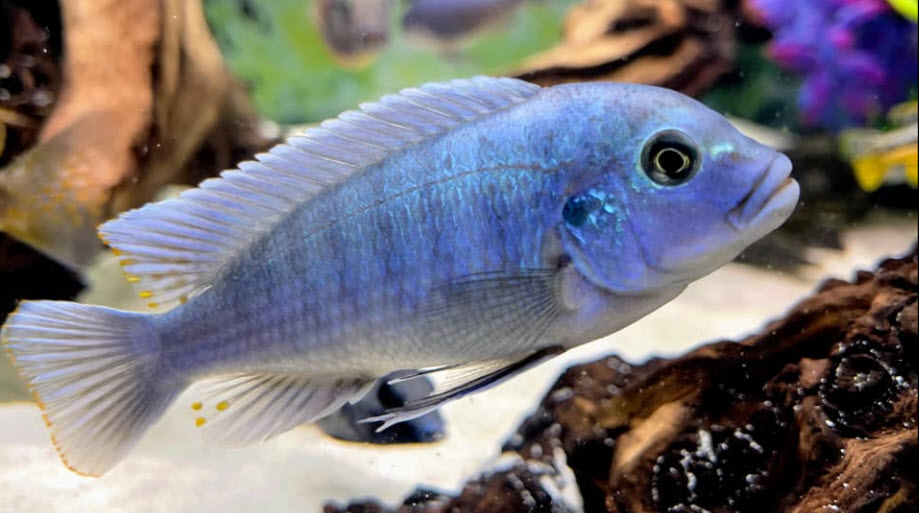
How to Drop One’s Maintenance Time
HalfMan-HalfCichlid (great YouTube channel from a biologist who understands the science of aquariums) did an excellent video on how to reduce aquarium maintenance to a minimum. He had a large 300 gallon tank and he timed his “conventional” maintenance as follows:
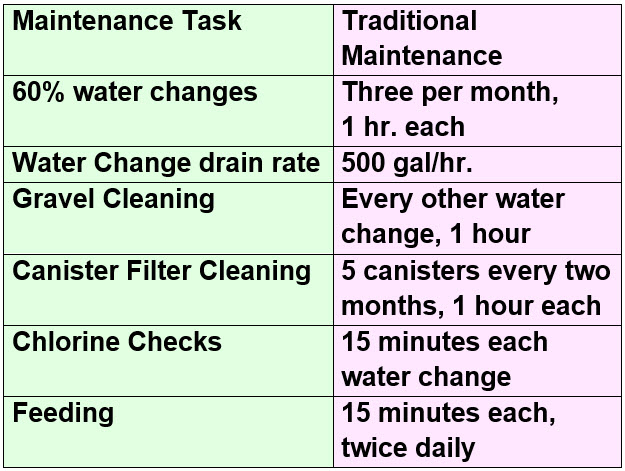
This “standard maintenance” number is about three hours a week maintaining this aquarium. This is why many leave the hobby. “Standard maintenance” is just a pain in the butt.
So Halfman/Halfcichlid changed his routine. He added a pump for removing the water from his tank during a water change. He added an automatic feeder. He added a large sump with a refugium where plants grew. He added wavemakers. He added a carbon filter to the water line filling the aquarium during water changes. And he dropped his maintenance down to this:
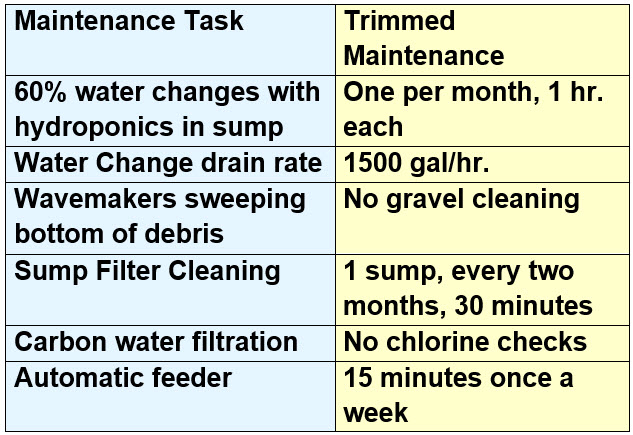
Note the “15 minutes once a week” with the automatic feeder is the fifteen minutes required to measure out the food and put it in the feeder. All these changes took the time down to about thirty minutes per week, an 83% reduction.
Now the author is a big believer in something called “drip water changes”. If one adds a drip water changer, an under gravel filter AND adds a no mechanical filtration fluidized K1 sump, one can go to virtually no maintenance per week.
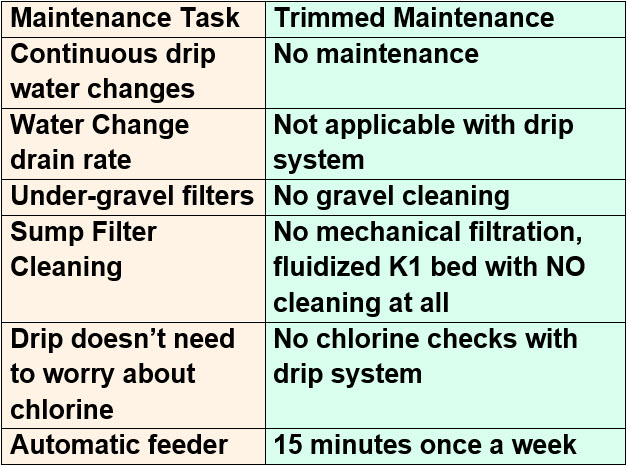
All these measures can reduce maintenance by a huge amount. The only maintenance in the above scenario is feeding. That is it.
Many make keeping an aquarium an arduous time-consuming hobby. It simply doesn’t have to be that way.
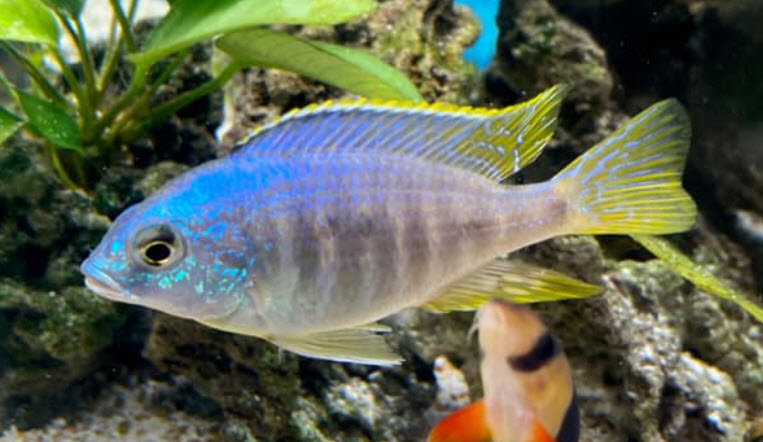
Chlorine and Chloramine and Carbon
HalfMan/HalfCichlid recommends activated carbon to remove chlorine and chloramine. This is good advice IF AND ONLY IF one has only chlorine in one’s tap water. Activated carbon will rapidly convert chlorine to chloride by a process called “reduction” and the carbon will last for six months or so.
But chloramine is different. At the pH of most drinking water chloramine is only slowly reduced to ammonia and chloride (Bauer and Snoyeyink, 1973, Komorita and Snoeyink, 1985). The reduction is very slow (maximum of 0.3 gallons per minute through three feet of carbon, per the article “Activated Carbon Filtration” DeSilva, 2000), which means it doesn’t work well for doing a water change (1 to 5 gpm and a few inches of carbon). Because the reduction generates ammonia and ammonia is a food source for bacterial growth, activated carbon beds reducing chlorine become “fouled” pretty rapidly and stop doing reduction.
So if one has chloramines activated carbon is not an option. Currently about 60% of the municipal water supplies in the USA use chloramine or a combination of chlorine and chloramine.

Automatic Feeders
I found the old mechanical automatic feeders to be very dependable. They are simply mechanical clock mechanisms modified for use in an automatic feeder. But I have found the newer “solid state” feeders to be very unreliable. I’ve now had several malfunction and dump a weeks worth of food into the aquarium. It is probably because programming them is a nightmare and I’m not tech savvy enough to interpret what the instructions say, but so be it.
Now my aquariums have a HUGE amount of filtration so this dumping didn’t kill any fish or anything. But in most hobbyist’s tank this will kill fish. So I do not recommend the newer automatic feeder designs.
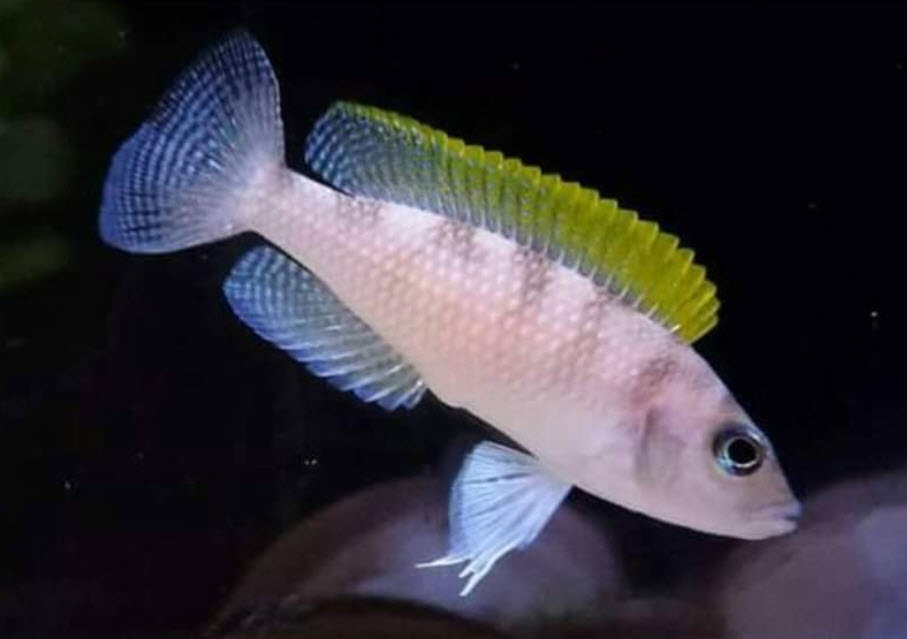
Cleaning the Viewing Area
Cleaning the front acrylic panel or glass of algae is so automatic and casual that I often forget to add it to maintenance (an omission which I have made in the charts above… whoops). I use the magnetic glass cleaners but one can use a whole host of things to do it. Some even just use an old credit card. Other use razor blades. Some seem to like the white foam cleaners. Plastic pot scrubbers to the job very well.
Further Data
We go into all aspects of maintenance in the following links:
18.1. Aquarium Water Changes
18.2. Drip Water Changes
18.3. Cleaning the Substrate
18.4. Cleaning the Filter
18.5 Heavily Stocked Maintenance
18.6. Old Tank Syndrome
18.7. Sick Tank Syndrome
Return to the Home page
.
Aquarium Science Website
The chapters listed below or on the right side in maroon lead to close to 400 articles on all aspects of keeping a freshwater aquarium. These articles have NO links to profit-making sites and are thus unbiased in their recommendations, unlike all the for-profit sites you will find with Google. Bookmark and browse!
.

Dave says
In reply to Robert …… Just use some polyester matting. Oil sticks preferentially to the polyester.
Phil Gardner says
Hello Dave
Thank you for your thought provoling articles . As a fish keeper since the late 1970s I was fascinated by your insights . I was interested in your section on Maintenance and water changes. Probably for 50 years Ive changed 25% of Aquarium water most weeks but now wonder what for?! Luckily Im only running Nano tanks so is not a big deal however Im not sure I need to do so as often.Tthe point re filtration was interesting . I only clean out my internal filters and sponges every 2 3 months or so with a light swill in old aquarium water , this enables me to ensure the filter imput and output of water doesnt slow down or even stop . My point was that I guess its important to check if not changing or cleaning propellors in internal filters on a regular basis make sure the filter flow is still occuring and not too slow or stopped altogether.
Finally It was great to read the comments on stocking levels in tanks most of what you read about stovking levels must go back 70 years!
Thanks .
Phil ( Otley ) west Yorkshire England
Dave says
In reply to Stefano Salt buildup is one of the legitimate uses for water changes. A 50% change very two months should prevent any problems.
Stefano says
In response to Dave… and there’s no salt buildup?
(if you have an article that speaks about this can you point me?)
thanks!
Dave says
In reply to Strefano ….. just good old tap water.
Strefano says
What i have to use to top off the water in an aquarium ?
Osmosis ?
Osmosis with salt like KH+ and/or GH+ ?
Tap water?
Thanks for your time!
Dave says
In reply to Alpacaphobic …. Hydrogen peroxide is deadly to some fish. It doesn’t break down into simply oxygen and water. It breaks down into a form of monoatomic oxygen (Hydroxyl radical) that kills any cell it comes in contact with. The guppies somehow got a full blast of it and died. The Flourish had nothing to do with it. I won’t use any algaecide including peroxide simply because they ALL can kill fish.
alpacaphobic says
I am completely stumped on something that happened with one of my tanks this weekend.
It’s a 20 gallon, lots of plants — various stem plants, vals, crypts, frogbit and salvinia and a stupid amount of free-floating java moss — lots of guppies and platies and a couple of ghost shrimp. It’s been running for about eight months, water is always crystal clear, plants flourish, livebearers do what livebearers do, it’s awesome.
Filtration-wise, it has the HOB, a double-headed sponge filter, and another large sponge filter, all mature. It had one of the good HOBs that hold a tone of media, but the motor burnt out when we had a power outage a few days ago. I replaced it with a brand-new and totally inferior HOB, but on the day of the water change disaster I had switched that out with an HOB identical to the old one, that had been running in another planted tank with pea puffers for five or six months.
So, then I did a water change of maybe 50%. I run tap water, dose it with 4-5X Prime, let it sit in buckets for a few days. Out of the tap it doesn’t even register on the chlorine tab on my test strips, pH of like 7.8 and TDS of ~200, GH and KH register in the middle range on said test strips.
After the water change, I added a full dose of Flourish, might have been a little more than my tank needed, but not by much. Maybe 20 minutes later, I hit a rock covered in black algae with hydrogen peroxide. Big rock, lots of algae, used maybe 3 of those turkey baster pipette things full of H2O2.
I walk away, do some dishes, come back a half hour later and all of the adult guppies are clumped up at the top of the water next to the sponge filter outflow.
I scoop out as many as I can into a running quarantine tank where I’d been scooping out extra fry anyway, and do a water change that probably ended up being like 90%, and drop in an extra sponge filter and a big-ass bubble stone for good measure.
I should mention that through all of this, the platies never even acted like anything was off. Neither did the ghost shrimp, which I’ve kind of considered canaries in my tanks, they’re the first to kick off if something is wrong.
Anyway, one of the oldest males was already dead on the bottom of the tank when I noticed the problem, and the other full-grown guppies followed, after spending a few hours at the top of the tank, or huddling under the filter. Then the juveniles went. Then the fry.
Even the fish that had been scooped out as soon as I saw them didn’t make it, so it had to be an immediate injury, whatever it was. A few of the fry had some very weird seizure-looking spells before they died, just twisting and flopping frantically in the middle of the water column, then straightening out and going on their way!
And this morning of course I wake up to a tank full of green water, in what had been my most stable and trouble-free tank!
The only thing I can think of is possibly some weird reaction between the hydrogen peroxide and the Flourish, which looks like it has more iron than any other active ingredient? The way they were huddled at the most oxygenated water in the tank obviously points to an issue with O2, right? Like, as I understand it the peroxide just turns into water and oxygen, but would the oxidation reaction with the iron and/or other crap in the Flourish end up depleting the water’s O2? But how would a temporary (I’m guessing) depletion of O2 cause so much damage to only the guppies that they died in perfect water hours later, while the platies and ghost shrimp (GHOST SHRIMP OF ALL THINGS) are just hanging out, being not dead?!?!
AARRGGGGHHHHHHH. This is killing me — obviously I did something wrong which I should not do again, but what?!?!????